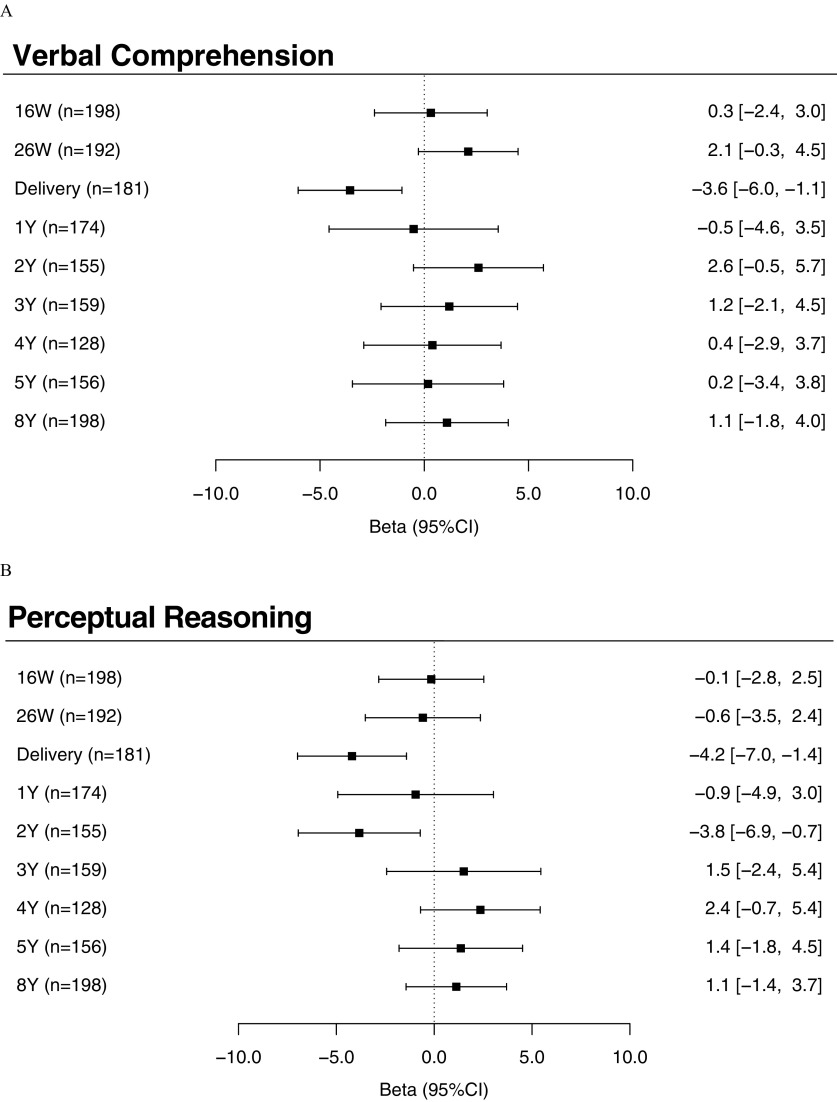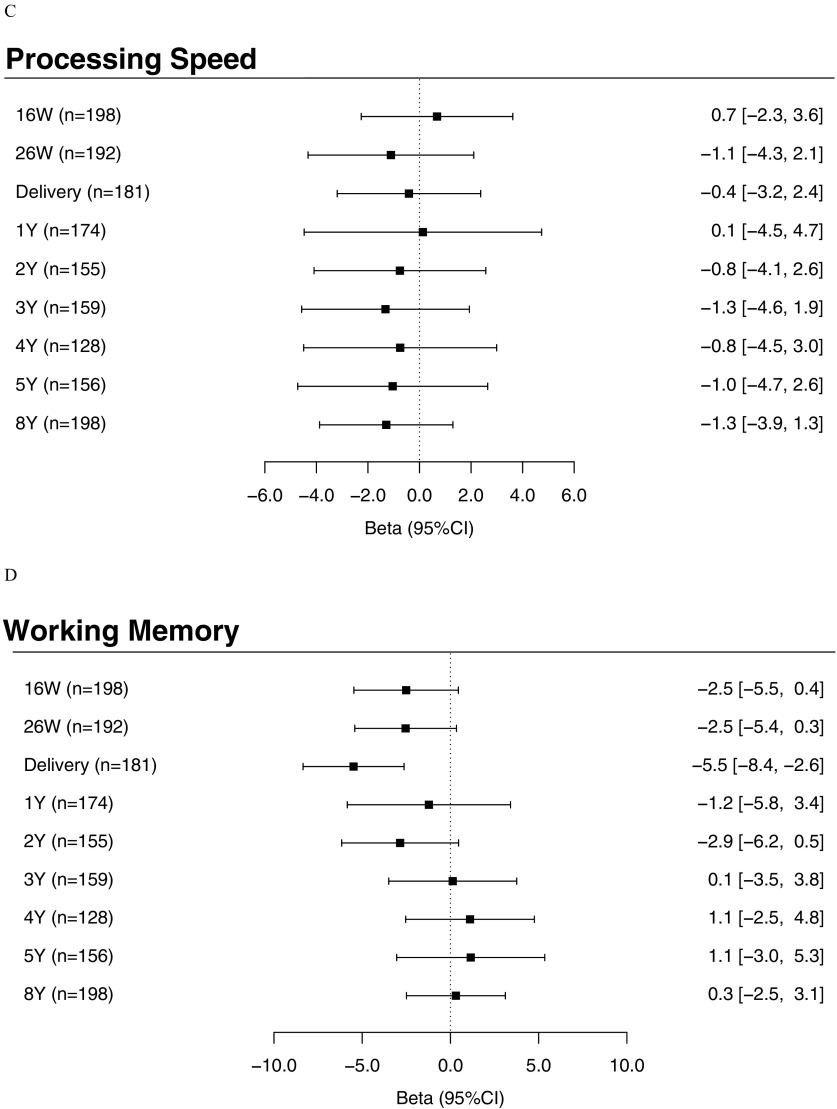Figure 3.
Adjusted differences in FSIQ subscales: (A) Verbal Comprehension Index; (B) Perceptual Reasoning Index; (C) Processing Speed Index; and (D) Working Memory Index scores at 8 y of age with 10-fold increases in gestational and childhood urinary triclosan concentrations. Betas and 95% confidence intervals derived from a multiple informants model. CI, confidence interval; FSIQ, Full-Scale Intelligence Quotient; W, weeks of gestation; Y, age in years. Adjusted for urinary creatinine concentrations and serum cotinine concentrations (continuous), child sex (male vs. female), child race/ethnicity (white-non-Hispanic, black-non-Hispanic, or other), household income (continuous), marital status (married vs. unmarried), maternal education (high school or less, some college, or college graduate or more), caregiving environment scores (continuous), and maternal FSIQ (continuous). Error bars represent 95% confidence intervals. Urinary triclosan by exposure period interaction term , 0.03, 0.82, and 0.02, for Verbal Comprehension, Perceptual Reasoning, Processing Speed, and Working Memory, respectively.


